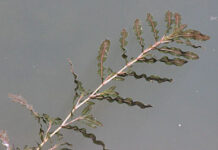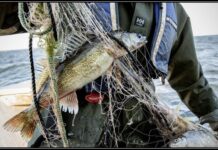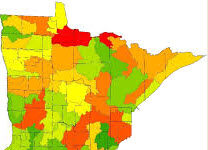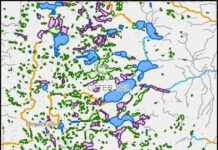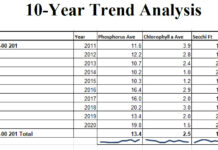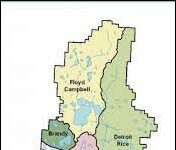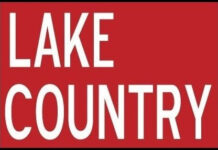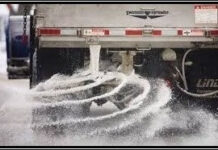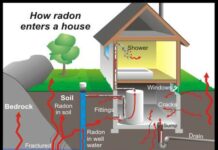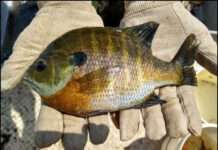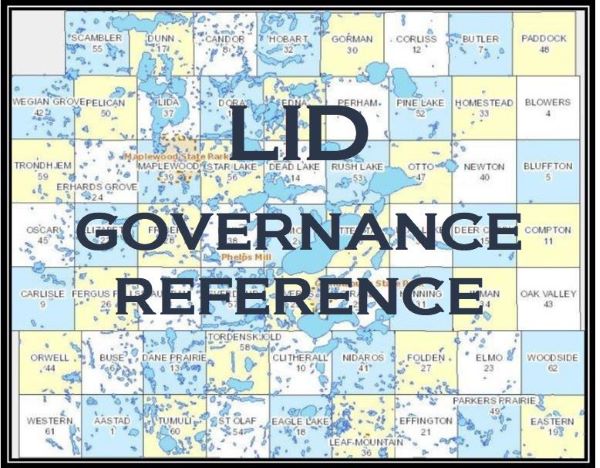For more information: [email protected]
LID GOVERNANCE REFERENCE
The Governance document for a Minnesota Lake Improvement District (LID) must include provisions mandated by State, State Agency, County and other local government units. It must also include provisions of authority and responsibility delegated to the LID by those government units. The LID Governance Reference itemizes these provisions to be comparable to Bylaws customary to like organizations. The Reference will assist an author of a LID Governance to construct a credible document. For more information or assistance email lakehelp2@gmail.com.
- NAME
- The name of the organization is: XXXX Lake Improvement District
- DEFINITIONS
- Definitions: Minnesota Statutes
Minnesota Statutes provide definitions for terms
https://www.revisor.mn.gov/statutes/cite/103B.505- Board
- Commissioner
- District
- Joint county authority
- Property Owner
- Definitions: Minnesota Rules
Minnesota Rules provide definitions of terms
https://www.revisor.mn.gov/rules/6115.0920/- Shall
- Agency
- Commissioner
- District drainage basin
- District boundaries
- Lake
- Lake Improvement District
- Natural hydrologic boundaries
- Resident
- Resident Owner
- Water basin
- Watershed
- Definitions: Lake Improvement District
Additional Definitions used in the Governance- Annual Meeting https://www.revisor.mn.gov/statutes/cite/103B.571
- Official Member Meeting
- Annual Report
- Board of Directors
- Board of Directors
- BOD
- Board
- Defined Property Entity
- A Parcel or group of Parcels that reasonably and logically constitute a Defined Property Entity
- Lake Improvement District
- District
- LID
- LID Registered Property Owner
- Property Owner
- Member
- Minnesota Pollution Control Agency
- MPCA
- Pollution Control Agency
- Statute
- Minnesota Statute
- Stat.
- Registered Voting Owner
- A Owner or designated Owner from a group of Owners registered with the LID to have one Voting Authority
- Report
- Annual Report Filed from the Annual Meeting
- Minnesota Rule
- Minnesota Rule
- An administrative rule is a general statement adopted by an agency to make the law it enforces or administers more specific or to govern the agency’s organization or procedure. https://www.revisor.mn.gov/rules/info/
- Minnesota Rule
- MPCA
- Minnesota Pollution Control Agency
- Voting Authority
- Eligibility of voting based on one Registered Voting Owner vote, one Defined Property Entity
- Annual Meeting https://www.revisor.mn.gov/statutes/cite/103B.571
- Definitions: Minnesota Statutes
- PURPOSE
- Purpose: Stat. 103B.511, Subd.1, Purpose https://www.revisor.mn.gov/statutes/cite/103B.511
- Preserve and protect the lake(s)
- Increase and enhance the use and enjoyment of the lake(s)
- Preserve the natural character of the lake(s) and their shoreland environment
- Provide for reasonable assurance of water quantity in the Lake(s)
- Protect the lake(s) from detrimental effects of human activities and certain natural processes
- Purpose: Rule 6115.0940 Goals For Lake Improvement Districts https://www.revisor.mn.gov/rules/6115.0940/
- Protection and rehabilitation of the lake(s)
- Prevent degradation of fish and wildlife habitat
- Prevent degradation of surface and ground water quality
- Prevent degradation of natural beauty and unique scientific values
- Prevent degradation of recreational values
- Prevent degradation of the quality of life generally
- Preserve public rights to public waters
- Ensure local involvement and commitment to future lake management
- Ensure conformity with federal, state, regional, and local laws, rules and water related land management policies
- Promote fair and objective resolution of conflicts between competing lake related interests in and around the District
- Purpose: Stat. 103B.511, Subd.1, Purpose https://www.revisor.mn.gov/statutes/cite/103B.511
- AUTHORITIES
- Minnesota Statutes 103B.501 – 103B.581, 103G.605, 103G.621, 459.20
https://www.revisor.mn.gov/statutes/cite/103B - Minnesota Administrative Rules 6115.0900 – 6115.0980
https://www.revisor.mn.gov/rules/6115/
- Minnesota Statutes 103B.501 – 103B.581, 103G.605, 103G.621, 459.20
- BOUNDARIES
- Rule 6115.0920 Definitions, Subp. 5, District boundaries https://www.revisor.mn.gov/rules/6115.0920/
- Boundary(ies)
- The Boundary(ies) shall encompass all parcels of real property, any part of which is located within XXX feet of the ordinary high water mark of XXXXX lake in XXXXX Township of XXXXX County (Agricultural exclusion?)
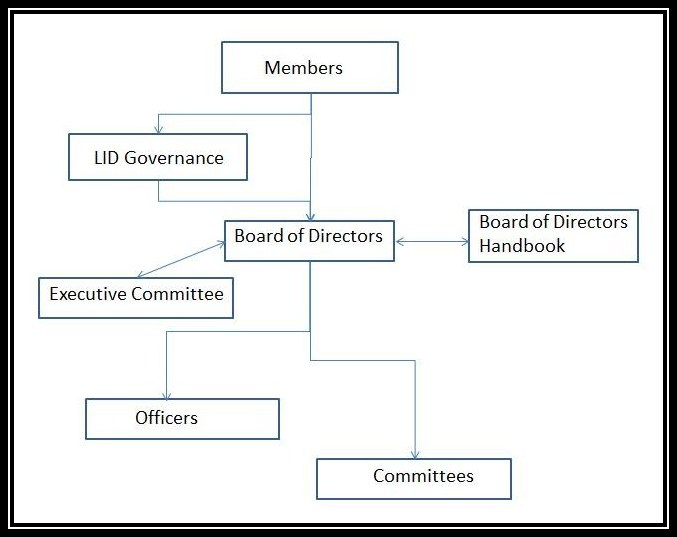
- ORGANIZATIONAL STRUCTURE
- LID Member Property Owners
- LID Governance
- Board of Directors
- Executive Committee
- Board of Directors Handbook
- Board of Directors
- Officers
- Committees
- MEETINGS
- Meetings: LID Property Owners
- Annual Meeting https://www.revisor.mn.gov/statutes/cite/103B.571
- Subd. Time. A district must have an annual meeting. The first annual meeting shall be scheduled during the month of July or August and be held annually in that period unless changed by vote of the previous annual meeting.
- Subd. Notice. The annual meeting shall be preceded by two weeks’ published notice and written notice mailed at least ten days in advance of the meeting to the county board or joint county authority, town boards and statutory and home rule charter cities wholly or partially within the district, the Pollution Control Agency, commissioner of natural resources, and if there is a proposed project by the district having a cost in excess of $5,000, all property owners within the assessment area.
- Subd. Agenda. (a) At the annual meeting the district property owners present shall:
- Elect one or more directors to fill any midterm vacancies in the BOD
- Approve a budget for the fiscal year
- Approve or disapprove proposed projects by the District in excess of $5,000
- Take up and consider other business that comes before them
- At the Annual Meeting all District Property Owners, including Absent Members as provided in the order establishing the District, shall elect one or more Directors for Board positions with expiring terms.
- Subd. Annual Report
- Each year the BOD shall prepare and file a Report of the financial conditions of the District, the status of all projects in the District, the business transacted by the District, and a discussion of the Director’s intentions for the succeeding years. Copies of the Report shall be transmitted to the County Board or joint county authority, town boards and city councils of statutory and home rule charter cities wholly or partially within the District, the commissioner of natural resources and the MPCA by four months after the Annual Meeting.
- Special Meetings
- Special Meeting of Members can be called by the BOD
- Special Meetings will adopt all appropriate attributes of an Annual Meeting
- The Written Notice will be sent in advance of the meeting same as for the Annual Meeting
- The Written Notice will include the purpose of the Meeting
- Time and location will be set by the BOD
- LID Member voting
- For elections by Members the LID will recognize one Voting Authority for each Registered Voting Owner representing one Defined Property Entity.
- Annual Meeting https://www.revisor.mn.gov/statutes/cite/103B.571
- Meetings: Board of Directors
- Regular meetings of the BOD will be determined and included in the Board Of Directors Handbook
- Special meetings of the BOD can be called by the President
- Quorum
- A majority of Board Members participating in a vote by any method sanctioned by the Board will constitute a quorum.
- Meetings: LID Property Owners
- BOARD OF DIRECTORS
- Order Establishing District 103B.535 (5) https://www.revisor.mn.gov/statutes/cite/103B.535
- An order establishing a district must state the: (5) number, qualifications, terms of office, and method of election, removal, and filling of vacancies of the board of directors, including a method for property owners not present at the annual meeting to participate in the election of the district board
- Membership https://www.revisor.mn.gov/statutes/cite/103B.551 Subdivision 1
- After a lake improvement district is established, the county board, joint county authority, or commissioner that established the district shall appoint persons to serve as an initial board of directors for the district. Subsequent board members must be elected by persons owning property in the district at the annual meeting of the district. The number, qualifications, terms of office, and method of election, removal, and filling of vacancies of directors shall be as provided in the order creating the board of directors. The initial and all subsequent boards of directors must include persons owning property within the district, and a majority of the directors must be residents of the district.
- Number of Directors https://www.revisor.mn.gov/statutes/cite/103B.521
- Subd. 1 (Petition), 6 “the number, from five to nine, of directors proposed for the district”
- Elections subsequent to the initial appointed BOD elections will be held at the Annual Meeting to fill vacant BOD positions.
- Election of BOD members must comply with the provision in Board of Directors https://www.revisor.mn.gov/statutes/cite/103B.551 103B.551, BOARD OF DIRECTORS, Subd. 1, Membership, “The number, qualifications, terms of office, and method of election, removal, and filling of vacancies of directors shall be as provided in the order creating the board of directors. The initial and all subsequent boards of directors must include persons owning property within the district, and a majority of the directors must be residents of the district. DETERMINATION OF RESIDENCE, MN stat. 200.03 https://www.revisor.mn.gov/statutes/cite/200.031
- If an election would result in a majority of the Board not being residents of the District vacancies on the Board shall be filled in the order of the highest votes received by such candidate(s) as will satisy the statutory requirement.
- The BOD will validate qualification of Board candidates per MS
- In case of ties of votes for qualified candidates for Director the Chair will reserve his vote for breaking the tie.
- Powers https://www.revisor.mn.gov/statutes/cite/103B.551 Subd. 3
- Powers. County boards, joint county authorities, statutory and home rule cities, and towns may, by order, delegate the powers in this section to the board of directors of a district to be exercised within the district. Programs and services undertaken must be consistent with the statewide water and related land resources plan prepared by the commissioner of natural resources and with regional water and related land resources plans. A body of water may not be improved by using authority granted under this section unless the public has access to some portion of the shoreline. County boards, joint county authorities, statutory and home rule cities, and towns may delegate their authority to a district board of directors to:
- acquire by gift or purchase an existing dam or control works that affects the level of waters in the district;
- construct and operate water control structures that are approved by the commissioner of natural resources under section 103G.245;
- undertake projects to change the course current or cross section of public waters that are approved by the commissioner of natural resources under section 103G.245;
- acquire property, equipment, or other facilities, by gift or purchase to improve navigation;
- contract with a board of managers of a watershed district within the lake improvement district or the board of supervisors of a soil and water conservation district within the district for improvements under chapters 103C and 103D;
- undertake research to determine the condition and development of the body of water and the water entering it and to transmit the results of the studies to the Pollution Control Agency and other interested authorities;
- develop and implement a comprehensive plan to eliminate water pollution;
- conduct a program of water improvement and conservation;
- construct a water, sewer, or water and sewer system in the manner provided by section 444.075 or other applicable laws;
- receive financial assistance from and participate in projects or enter into contracts with federal and state agencies for the study and treatment of pollution problems and related demonstration programs;
- make cooperative agreements with the United States or state government or other counties or cities to effectuate water and related land resource programs;
- maintain public beaches, public docks, and other public facilities for access to the body of water;
- provide and finance a government service of the county or statutory or home rule city that is not provided throughout the county or, if the government service is provided, the service is at an increased level within the district; and
- regulate water surface use as provided in sections 86B.205, 103G.605, and 103G.621.
- EXECUTIVE COMMITTEE
- The BOD will manage the Executive Committee per the provisions of the LID Board Of Directors Handbook.
- OFFICERS
- Offices
- Chair
- Vice Chair
- Treasurer
- Secretary
- Eligibility
- Officers of the LID must also be members of the BOD
- Elections
- Following elections at each Annual Meeting the Board members will meet to elect Officers.
- Responsibilities and Authorities
- Where not specified in the LID Governance, responsibilities and authorities delegated to Officers by the BOD will be those common and reasonable to be assigned to each Office and specified and detailed in the Board Of Directors Handbook
- Chair
- Preside at Member and Board Meetings
- Prepare the Annual Report
- Vice Chair
- Perform as Acting Chair in the absence of the Chair
- Treasurer
- Create the Annual Budget
- Secretary
- Keep all administrative records for the LID including Minutes of Member and Board Meetings
- Offices
- FINANCIAL CONTROLS
- Financial Controls including approval and processing of disbursements, management of bank accounts and other processes is deferred to the Board of Directors Handbook.
- FISCAL YEAR
- The Fiscal Year shall be January 1 to December 31 of each year
- PROXIES
- Proxies management for votes on measures during Annual Meetings, Special Meetings and Referendums is deferred to the Board of Directors Handbook
- POWER OF ATTORNEY
- Power of Attorney management of Power of Attorney is deferred to the Board of Directors Handbook
- D&O INDEMNIFICATION
- Indemnification of Directors, Officers, Agents and others as determined by the Board of Directors is deferred to the Board of Directors Handbook
- ELECTRONIC MEETING PARTICIPATION
- Management of Electronic participation at Meetings is deferred to the Board of Directors Handbook
- ABSENTEE VOTING
- The process of providing Absentee Voting is deferred to the Board of Directors Handbook
- ROBERTS RULES
- All Meetings will be conducted in accordance with Roberts Rules of Order

